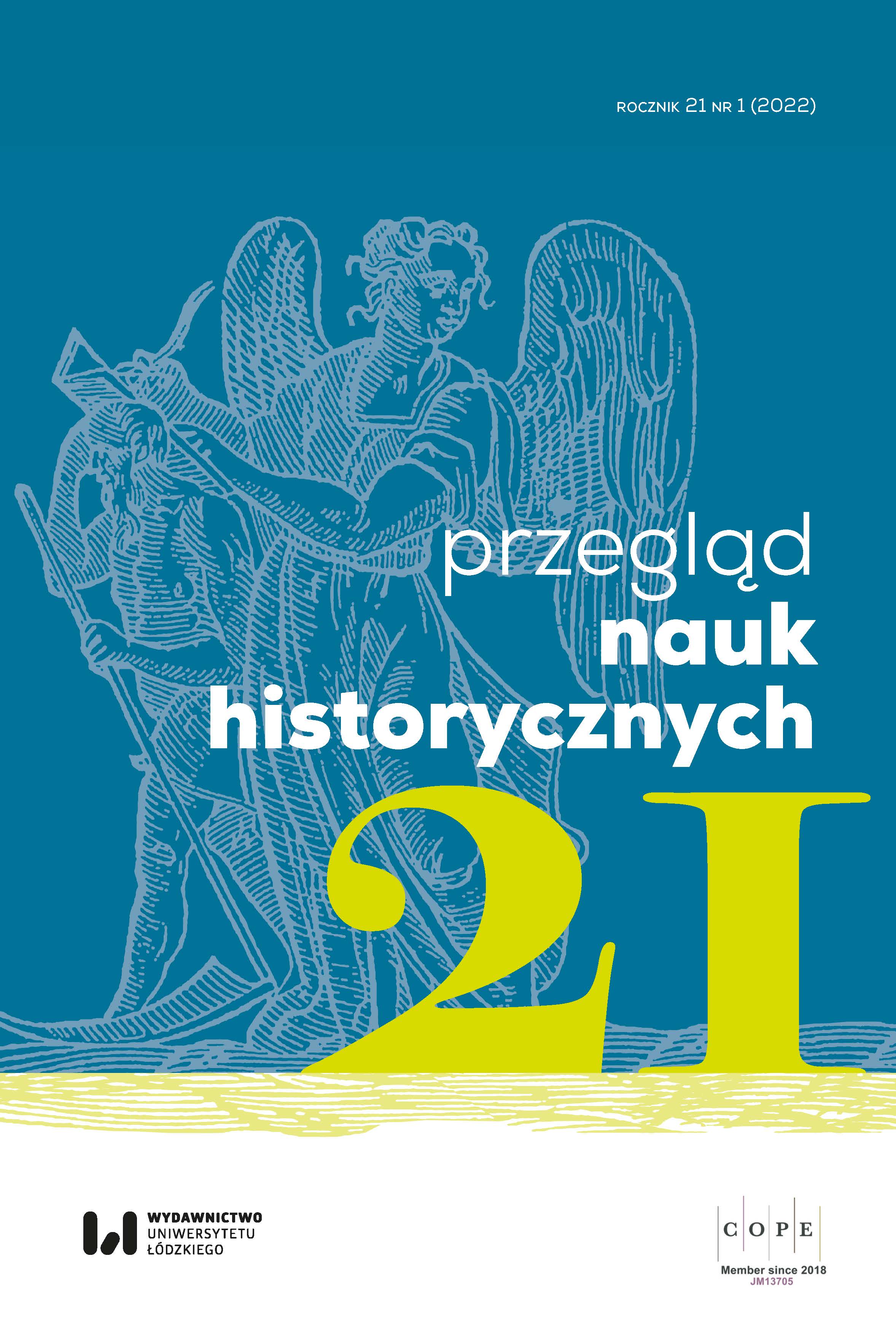Racial elite of the nation. Heinrich Himmler’s project of the SS family community
DOI:
https://doi.org/10.18778/1644-857X.21.01.08Keywords:
Heinrich Himmler, Third Reich, Schutzstaffel, SS, Engagement and Marriage Order, racial elite, population segregation, World War IIAbstract
Adolf Hitler’s protective squadrons (Schutzstaffel), commonly known as the SS, owed its dynamic development to Heinrich Himmler, who during the Third Reich transformed it into an elite formation. The SS became both an instrument of executive power and a political and military power base for the National Socialist regime. Since Himmler was appointed the Reichsführer, the SS became the most crucial project for him as on this very formation he based his concept of the racial family community which he meticulously implemented over the years.
Proclaiming the theory that “humans can be successfully bred just as animals are”, Himmler dreamed of building a racially pure society with genetic traits most valued by the National Socialist power. To carry out this project Himmler, vested with the power of the Reichsführer, introduced a range of various directives; only candidates who met racial criteria set by Himmler could enter the ranks of the SS. These rigorous requirements later extended also to candidates for future wives of the SS men. Over the next years all these criteria were to guarantee a construction of racially elitist kinship of families as well as the genetic continuity of the most desirable traits. Himmler did not just claim the right to issue marriage permits to his subordinate SS men, but he also began to interfere with their family lives, expecting couples to produce a specified number of offspring to the community of the SS. He also demanded the SS families to adapt to specific social roles.
This paper aims to describe theoretical and practical prerogatives of Heinrich Himmler’s actions to build the racial elite of the German nation based on the power of the SS. In this study I also attempt to answer the question whether Himmler’s directives were actually observed and, to what extent these practical guidelines proved to be effective; how they influenced the number of marriages concluded by SS men and the number of children born in these relationships.
Downloads
References
Bundesarchiv Berlin-Lichterfelde [BAB], Persönlicher Stab Reichsführer SS, NS 19.
Google Scholar
Bundesarchiv Berlin-Lichterfelde [BAB], Rasse- und Siedlungshauptamt-SS, NS 2.
Google Scholar
Bundesarchiv Koblenz [BAK], Nachlass Himmler, N 1126.
Google Scholar
Eden A., Pamiętniki 1923–1938, t. I (W obliczu dyktatorów), przekł. J. Meysztowicz, Warszawa 1970.
Google Scholar
Himmler H., Die Schutzstaffel als antibolschewistische Kampforganisation, München 1937.
Google Scholar
Himmler H., Heinrich Himmler Geheimreden 1933 bis 1945 und andere Ansprachen, Hrsg. B. F. Smith, A. F. Peterson, München 1974.
Google Scholar
Himmler H., SS-Oberabschnitt West – Die Ordensgesetze der SS, [b.r. i m.w.].
Google Scholar
Kersten F., Totenkopf und Treue. Heinrich Himmler ohne Uniform, Hamburg 1952.
Google Scholar
Klietmann K. G., Auszeichnungen des Deutschen Reiches 1936–1945. Eine Dokumentation ziviler und militärischer Verdienst- und Ehrenzeichen, Stuttgart 2004.
Google Scholar
Reichsführer!… Briefe an und von Himmler, Hrsg. H. Heiber, Stuttgart 1968.
Google Scholar
Ackermann J., Heinrich Himmler als Ideologe, Göttingen 1970.
Google Scholar
Birn R. B., Die Höheren SS- Und Polizeiführer. Himmlers Vertreter im Reich und In den besetzten Gebieten, Düsseldorf 1986.
Google Scholar
Böhler J., Gerwarth R., Młynarczyk J., Waffen-SS, przekł. G. Siwek, Kraków 2019.
Google Scholar
Citino R. M., Zagłada Wehrmachtu. Kampanie 1942 roku, Oświęcim 2019.
Google Scholar
Hale Ch., Kaci Hitlera. Brudny sekret Europy, przekł. M. Habura, Kraków 2012.
Google Scholar
Hamšik D., Drugi człowiek Trzeciej Rzeszy, przekł. U. Janus, Warszawa 1991.
Google Scholar
Heinemann I., Rasa, ziemia, niemiecka krew. Główny Urząd Rasy i Osadnictwa SS i nowy porządek rasowy Europy, przekł. J. Górny, Gdańsk 2014.
Google Scholar
Höhne H., Zakon Trupiej Czaszki, przekł. S. Kędzierski, Warszawa 2006.
Google Scholar
Hrabar R., „Lebensborn” czyli źródło życia, Katowice 1975.
Google Scholar
Ingrao Ch., Wierzyć i niszczyć. Intelektualiści w machinie wojennej SS, przekł. M. Kamińska-Maurugeon, Wołowiec 2013.
Google Scholar
Knoebel E. E., Racial Illusion and Military Necessity: A Study of SS Political and Manpower Objectives in Occupied Belgium, Colorado 1965.
Google Scholar
Lilienthal G., Der „Lebensborn e.V”. Ein Instrument nationalsozialistischer Rassenpolitik, Stuttgart–New York 1985.
Google Scholar
Longerich P., Himmler. Buchalter śmierci, przekł. S. Szymański, J. Skowroński, Warszawa 2014.
Google Scholar
Majewski R., Waffen SS – mity i rzeczywistość, Wrocław 1977.
Google Scholar
Schmitz-Köster D., W imię rasy. Dzieci dla Führera – mity i rzeczywistość, przekł. R. Wojnakowski, Warszawa 2000.
Google Scholar
Schwarz G., Żony SS-manów. Kobiety w elitarnych kręgach III Rzeszy, przekł. B. Nowacki, Warszawa 2016.
Google Scholar
Urlic of England, Allgemeine SS 1925–1945, przekł. S. Kędzierski, Czerwonak 2013
Google Scholar
Downloads
Published
How to Cite
Issue
Section
License

This work is licensed under a Creative Commons Attribution-NonCommercial-NoDerivatives 4.0 International License.













